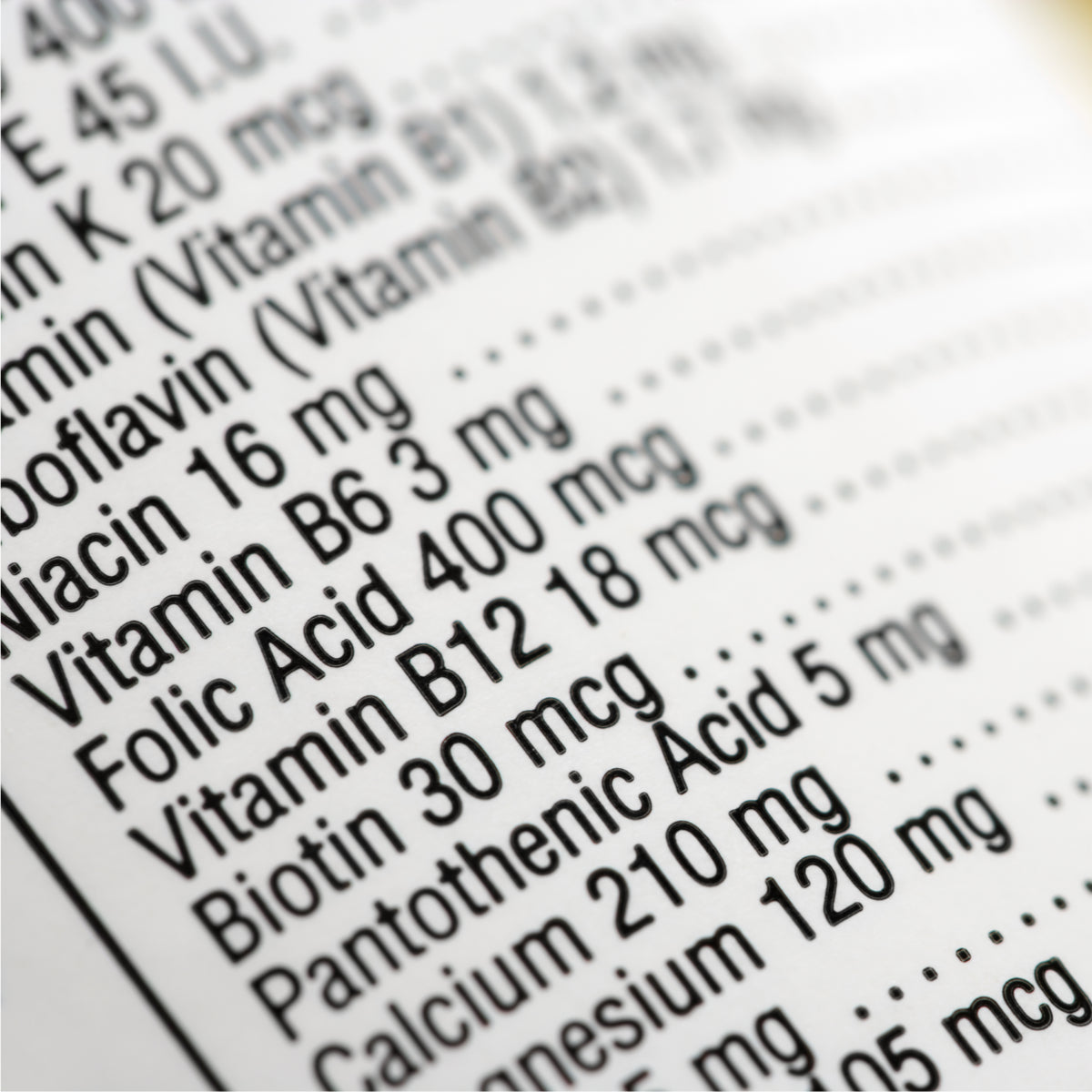Your Cart is Empty

If you look at the nutritional information on the back of any nutritional supplement you will likely see a list of percentages relating to the NRV's. NRV's, or Nutritional Reference Values are a guideline to daily amounts of vitamins & minerals set by the EU. Traditionally known as Recommended Daily Amount (RDA) in the UK, the NRV is an amount determined by a panel of nutritional experts which will meet the requirements of 97.5% of the population. This requirement is the intake level of essential nutrients needed by healthy people to prevent deficiencies. The table below shows the Nutritional Reference Value for all Vitamins and Minerals as per current (May 2016) EU guidelines.
| Vitamin / Mineral | EU NRV |
|---|---|
| Vitamin A | 800mcg / 2664 IU |
| Vitamin D | 5mcg / 200IU |
| Vitamin E | 12mg / 17.9 IU |
| Vitamin K | 75mcg |
| Vitamin C | 80mg |
| Thiamine (Vitamin B1) | 1.1mg |
| Riboflavin (Vitamin B2) | 1.4mg |
| Niacin (Vitamin B3) | 16mg |
| Pantothenic Acid (Vitamin B5) | 6mg |
| Vitamin B6 | 1.4mg |
| Vitamin B12 | 2.5mcg |
| Biotin | 50mcg |
| Folate / Folic Acid | 200mcg |
| Potassium | 2000mg |
| Chloride | 800mg |
| Calcium | 800mg |
| Phosphorus | 700mg |
| Magnesium | 375mg |
| Iron | 14mg |
| Zinc | 10mg |
| Copper | 1mg |
| Manganese | 2mg |
| Fluoride | 3.5mg |
| Selenium | 55mcg |
| Chromium | 40mcg |
| Molybdenum | 50mcg |
| Iodine | 150mcg |
Is it safe to go above the NRV guidelines? The NRVs are minimum amounts and in most cases is perfectly safe to go above these levels. Many factors can increase a persons need for vitamins and minerals such as being very physically active, illness or pregnancy. It is helpful to look at NRVs on a sliding scale, with the minimum amount being that needed to prevent the most obvious signs of deficiency, with increasing levels being used by the body to provide less obvious benefits until optimum levels are reached.
Comments will be approved before showing up.